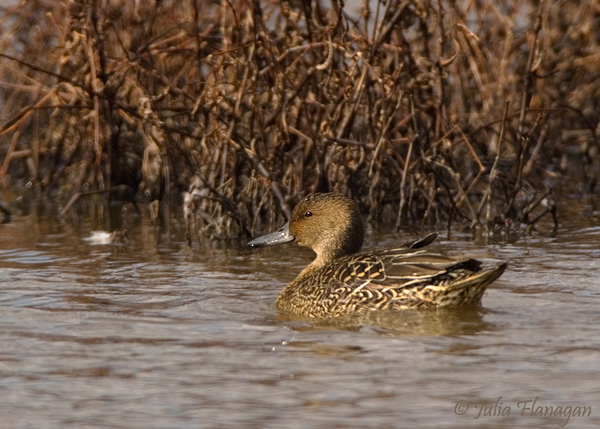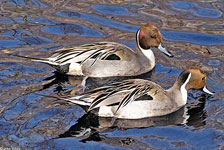|
|
||
|
Northern Pintail The Northern Pintail is a widely occurring duck which breeds in the northern areas of Europe, Asia and North America. This is a fairly large duck, with a long pointed tail that gives rise its name. The male has a very distinctive brown, grey and white appearance, whereas the female has mainly light brown plumage and a shorter tail. The male's call is a mellow whistle, whereas the female quacks like a Mallard.The Northern Pintail's breeding habitat is open un-wooded wetlands, such as wet grassland, lakesides or tundra. It nests on the ground, often some distance from water. It is strongly migratory and winters south of its breeding range to the equator. In winter, it will utilize a wider range of open habitats, such as sheltered estuaries, brackish marshes and coastal lagoons. It is highly gregarious outside the breeding season and forms very large mixed flocks with other ducks. The Pintail feeds by dabbling and upending in shallow water for plant food mainly in the evening or at night, and therefore spends much of the day resting. Its long neck enables it to take food items from the bottom of water bodies up 1 foot deep, which are beyond the reach of other dabbling ducks like the Mallard. The winter diet is mainly plant material including seeds and rhizomes of aquatic plants, but the Pintail sometimes feeds on roots, grain and other seeds in fields, though less frequently than other ducks. During the nesting season, this bird eats mainly invertebrate animals, including aquatic insects, mollusks and crustaceans. |
Home | Upcoming Events | About Us | Resource Issues | News | Local Contacts Maps | Photos | Publications | Youth Education | FAQ's | Links | Membership |







